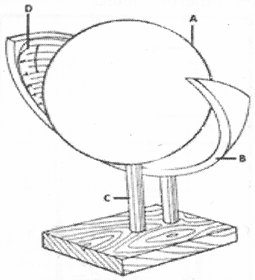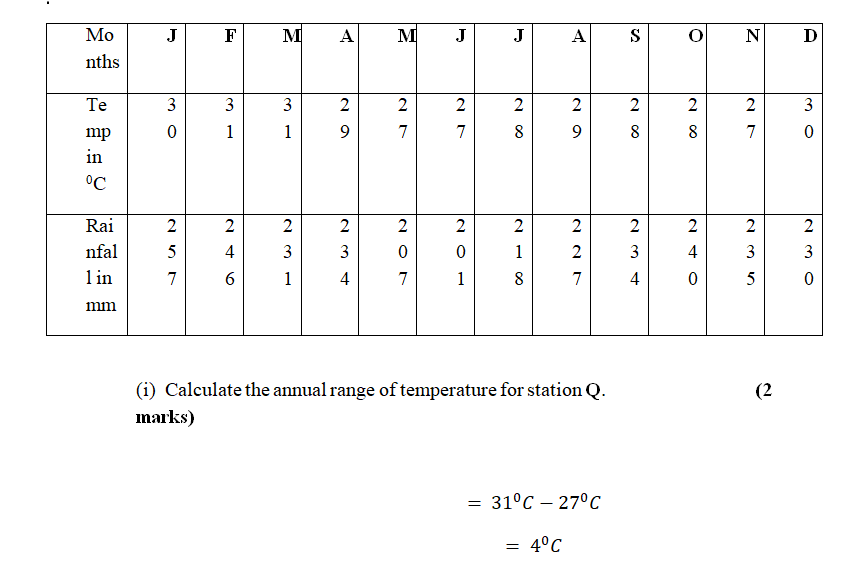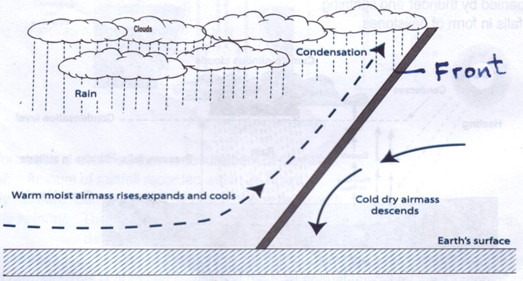a) Name two instruments kept in a Stevenson screen. (2 marks)
- Hygrometer
- Maximum thermometer
- Minimum thermometer
- The six’s thermometer
(b) The diagram below shows a weather measuring instrument. Use it to answer the questions below.
Name the parts marked A and D. (2 marks)

A – Spherical glass lens
D – Sensitized card
ii) Describe how the instrument works. (4 marks)
- The glass sphere focusses the sun’s rays on a sensitized card which is graduated in hours and minutes.
- The heat burns the paper/card as the sun moves across the sky.
- The unburntsections in the card indicates when there was cloud cover.
- At the end of the day, the card is removed and the number of hours that the sun shone are obtained by adding the burnt sections on the card.
(c) The table below shows climatic figure for station Q. Use it to answer the questions that follow.

(ii) Outline four characteristics of climate in station (4 marks)
- The station experiences high temperatures.
- Highest temperature is 31^0C/the lowest temperature is 27^0C.
- The annual range of temperature is 4^0C/the station has a low range of temperature.
- The station experiences high rainfall/2760mm.
- The station experiences rainfall throughout the year/there is no dry month.
- Lowest rainfall is experienced in May and July when temperature is also lowest.
- The station has one rainfall maxima regime. (Any 4x1mk =4mks)
(d) With the aid of a well-labelled diagram, describe the formation of convectional rainfall. (6 marks)
Its formation
The intense heating from the sun results into warm air rising in form of convectional currents.
The rising air reaches the high atmosphere and moisture in it condenses. Forms clouds and falls rain.
It falls in the late afternoon accompanied lighting and thunderstorms.

(e) You intend to carry out a field study of a weather station in your school.
Give two methods of recording data that you are likely to use. (2 marks)
- Filling in questionnaires
- Labelling of samples
- Note taking
- Taking photographs
- Sketching diagrams
- Tabulation
(Any2x1mk = 2mks)
(ii) State three reasons why the recording of data at a school weather station may be inaccurate. (3 marks)
- Human error.
- Interference with the instruments by animals and people.
- Poor siting of a weather station.
- Extreme weather conditions.
- Natural calamities i.e. landslides.
- Use of defective instruments. (Any 3x1mk = 3mks)
| Virus-free.www.avast.com |
